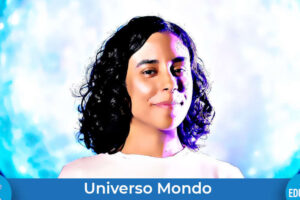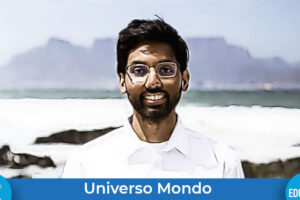Aggiornato il 28 Novembre 2024

Our guest this month is a social scientist who is passionate about social justice approaches to education. Louise Archer is Professor of Sociology of Education at University College London, United Kingdom, where she studies how academic research can actually ‘make a difference’ to educational policy and practice, especially in the context of STEM (Science, Technology, Engineering and Mathematics) disciplines.
Can you tell us about your research interests and what led you there?
My research focuses on trying to understand and address educational inequalities, particularly in relation to young people’s access, engagement and participation in STEM. I’ve been interested in educational identities and inequalities for many years, since my undergraduate degree and PhD research in the field of social psychology, when I focused on British Muslim students’ experiences of schooling.
When and how did you start focussing on science education?
I first started focusing on science education around 2009, when our ASPIRES (investigating children’s science and career aspirations) study began. It was largely because of my colleague, Professor Jonathan Osborne, who is a leading expert in science education, who suggested that we could work together, bringing my sociological approach and interest in identity to bear on the issue of unequal participation in science.
What do you think are the main challenges in science education today, in the UK and globally?
There are many challenges for science education ““ particularly how to prepare the next generation of young people with the relevant science understanding and skills for the many social and environmental challenges facing the planet and to enable them to be appropriately scientifically literate to be able to make informed choices and decisions in their lives.
Our research focuses particularly on trying to provide new ways of understanding why uneven patterns of participation in science (for example by race, gender and social class) are so entrenched and difficult to change ““ and what role science education itself plays in creating and sustaining these.

A few years ago, you and your colleagues developed the concept of “˜science capital’. Can you tell us more about it and why it is important?
The concept of science capital draws and expands on the work of French sociologist, Pierre Bourdieu. It is really a way of conceptually holding together all the science-related resources, or ‘capital’ (economic, cultural and social) that a person has.
Our research has shown how science capital relates to young people’ science aspirations and participation ““ when young people’s science capital is valued and leveraged in an educational setting, they are much more likely to develop a ‘science identity’ (to see themself and be recognised by others as a ‘science person’) and to continue with science after the age of 16 (the end of compulsory science education in England).
We’ve found that the concept is useful as an explanatory device and we’ve developed empirical ‘measures’ that can help us to see how educational interventions can help support young people’s science capital in the classroom. In particular though, we see the value of science capital as a reflective tool, which we’ve used to co-develop with primary and secondary teachers a pedagogical approach for teaching science in more inclusive ways, so that more young people can find a connection with science and come to see it as being ‘for me’.
How does science capital complement the original concept developed by Bordieu?
Science capital comprises three of Bourdieu’s original concepts ““ cultural capital (knowledge, understanding, qualifications), social capital (social contacts, networks) and habitus (socialised dispositions and ‘feel’ for the world).
Whereas Bourdieu focused more on the arts, we have extended his ideas to science-related forms of cultural capital (for example: science-related knowledge, skills, understanding, ‘know how’), social capital (for example: knowing people in science-related jobs, having family members who talk about science and encourage you to continue with science) and habitus (for example: science-related attitudes, dispositions and behaviours, e.g. doing science kits, reading about science for leisure, etc).

What do you think is the role of astronomy in this context? How could our discipline contribute to make a difference in science education and engage students from all backgrounds with science?
In our longitudinal ASPIRES study, where we have tracked young people via large scale surveys and in-depth interviews (and have also interviewed their parents over time) we found that astronomy and space were often popular and engaging topics.
However, we also found that as children got older, school physics does more and more to restrict engagement and put young people off continuing, often due to the ideas that physics is really hard, harder than most other subjects and only for the very exceptional (like the character, Sheldon, from the American TV comedy series ‘The Big Bang Theory‘). This, combined with some specific common pedagogical and educational ‘gate keeping’ practices that we identified in our research, ends up persuading many young people (but especially young women) that they are not ‘good enough’ to continue with physics at higher levels, even when they are super interested and attain very highly in the subject.
We think that there is a lot that areas of physics, such as astronomy, could do to help rectify this. Part of the answer lies in critically reflecting on how many of our taken for granted practices in the subject are part of the problem ““ rather than assuming that the problem is due to girls (e.g. lacking confidence, etc).
Would you like to tell us more about any other of your ongoing projects?
Along with the ASPIRES project ““ tracking young people from age 10-23 via over 48,000 surveys and over 700 interviews with 50 young people and their parents who have been tracked over the same time period ““ we have several other research studies at the moment.
The Youth Equity and STEM project is a five year, UK-US research and development partnership project looking at identifying and understanding what constitutes equitable practice in out-of-school science learning settings, for example science museums, zoos, STEM clubs. This project has a range of tools and resources for informal STEM learning educators and practitioners to help them to adopt inclusive practice and support young people from under-represented and minoritized communities to engage with STEM.
The Primary Science Capital Teaching Approach project is a research and development project working with primary teachers to co-design and disseminate a science capital teaching approach within primary schools.
The Making Spaces project is a research and development project in partnership with three makerspaces(1)A makerspace is a community center that provides technology, manufacturing equipment and educational opportunities to the public, editor’s note, looking at how makerspaces can be more inclusive and support diverse young people to engage with STEM in ways that support social and environmental justice.

What are the most exciting and most difficult parts in your job?
Managing four large studies is definitely a challenge in terms of the time, resources and energy required! The pandemic also posed multiple challenges for our projects. But I am privileged to have a job that is constantly interesting and feels like it is making a difference. I enjoy learning from our partnerships with practitioners, policy-makers and young people themselves and I particularly enjoy analysing data and writing research papers and reports.
Are there any scientists, thinkers, authors or other notable people that especially inspired you along this journey?
I am often inspired by the work of others but particularly colleagues working within the field of science education and social justice. I’ve also benefitted massively from wonderful and supportive colleagues where I have worked.

You and your collaborators have authored several books on education and inequalities, particularly in relation to gender, ethnicity and social class. Is there one that you would especially recommend to science educators and public outreach practitioners?
The book I co-wrote with Jen DeWitt focuses specifically on understanding children and young people’s science aspirations, so that might be one of the more relevant ones ““ along with a forthcoming edited collection later this year, co-edited with Henriette Tolstrup Holmegaard from Copenhagen on ‘Science Identities’, that brings together a whole range of research on the topic.
But in terms of understanding social inequalities and schooling more generally, I’d suggest the book I co-wrote with Heather Mendick and Sumi Hollingworth on ‘Urban Youth and Schooling‘.
Do you think that there is enough contact and exchange between science education researchers, on one hand, and scientists, science educators and outreach practitioners on the other hand? Are there any areas where this collaboration could improve?
We’ve found our partnerships and collaborations with science teachers and practitioners to be invaluable ““ I can’t really imagine doing good research without these participatory partnerships! I think there is always space for more co-operation and co-learning and co-design of research. Researchers should never be an ‘island’.
Note
| ↑1 | A makerspace is a community center that provides technology, manufacturing equipment and educational opportunities to the public, editor’s note |
|---|




Add Comment